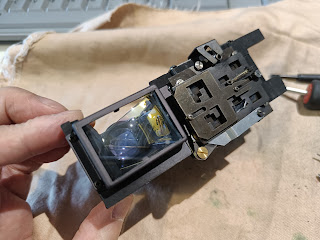This blog post records how got my Mamiya Press Super 23 from Japan and share my experience, good or bad. So here goes. I have always wanted a Mamiya Press Super 23 or Universal. I want to shoot panoramic with 35mm film and use it like a budget XPan. It also give me the option of shooting 6x7 or 6x9 images if I want to do that. I was looking through EBay and started to watch a few cameras and settled on a Super 23 with 100mm F3.5 lens with two film backs. The film backs are 6x7 and 6x9. The camera was ordered and I started track it. The camera was shipped by DHL and I had to pay 20% import tax. It took 16 days from ordering to receiving the camera. DHL was the shipper and they are pretty bad. I am not going to go into too much details but I was the one ended up chasing the package and directing them to me. I will not be using DHL for my international shipping for sure.
The camera itself was well packed and arrived in good shape. It is in good condition for it's age. Everything worked as expected. The lens was clean, all shutter speeds works and aperture blades clean. The 100mm F3.5 lens is the older type with 40.5mm filter. I think the later 100mm F3.5 lens have 55mm filter size. Testing both film backs with backing paper show them to be working. The foam light seals on the film backs seem to be intact and does not need changing at the moment.
The viewfinder was reasonably clear but there were some dirt visible. I did take the viewfinder/rangefinder assembly apart to clean it. It came out very well. I also took the time to adjust the rangefinder. It was every slightly off.
 |
| Cleaning the various lenses and mirrors of the viewfinder/rangefinder |
Basically, buying a camera from Japan does mean you will need to do some work on them. I don't think you will get a 100% camera. It may be an operational camera, but sending it to a camera technician may be required, unless you can do the work yourself.
 |
| The date code on the bottom of the viewfinder assembly |
For information, when the rangefinder assembly was removed from the body, there was a date code of 47,11,24. This mean the camera was made of the 47th year for Showa era, on 24th November. 47th Sowa year is 1972.

























